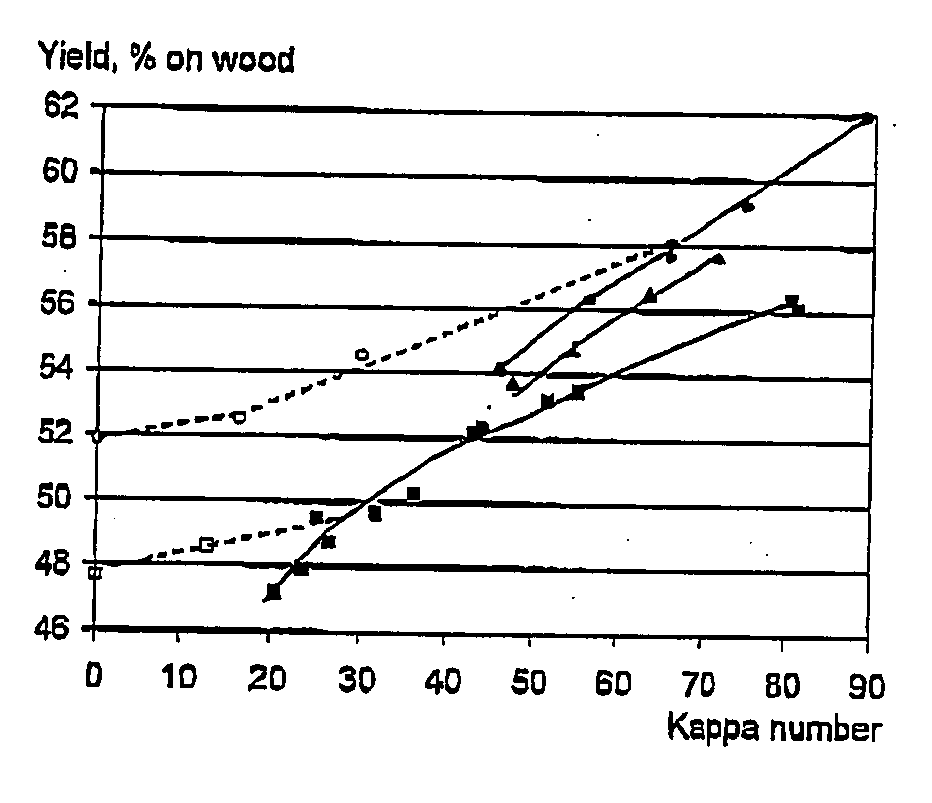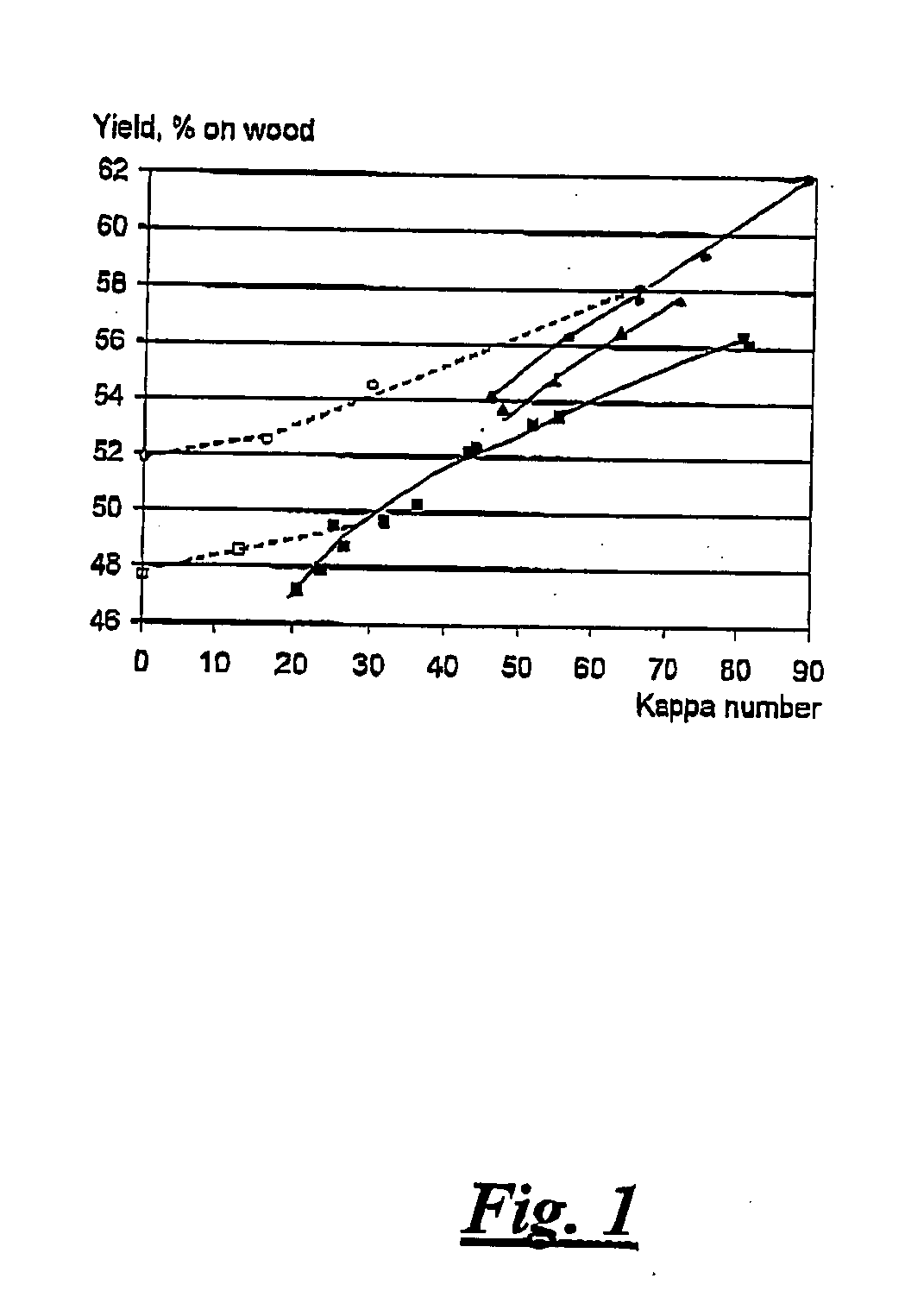Alkaline process for the manufacturing of pulp using alkali metaborate as buffering alkali
a technology of alkali metaborate and buffering alkali, which is applied in the direction of pulping with inorganic bases, pulp liquor regeneration, textiles and papermaking, etc., can solve the problems of low pulping yield, odorous reduced sulphur compounds, and low pulping yield, and achieve capital and cost-effective, environmental sound
- Summary
- Abstract
- Description
- Claims
- Application Information
AI Technical Summary
Benefits of technology
Problems solved by technology
Method used
Image
Examples
examples
Preparation of Metaborate Pulp in Accordance with Invention
[0048] An aqueous solution of sodium carbonate 30 g / l, sodium metaborate 45.7 an and sodium hydroxide 50 g / l was used as borate cooled liquor it cooking experiments. The cooking liquor im an amount, as effective alkali (NaOH) of 10% based on the weight of the wood, and 0.2% AQ also based on wood, were added to 300 g of chips of eucalyptus (Eucalyptus globulus). The metaborate cooking was conducted at a temperature of 160° C. for 90 minutes. Liquor-to-wood ratio was 4:1. After cooking the chips, containing the cooking solution, were defibrated gentle in a laboratory disc refiner (Sprout Waldron) to fibre bundles at a refining slit of 0.3 mm and washed. The kappa no of 62 was obtained after metaborate cooking.
[0049] Further delignification was carried out in two consecutive oxygen stages. A fresh aqueous solution comprising sodium carbonate, sodium metaborate and sodium hydroxide was added to the defibrated fibrous material...
PUM
| Property | Measurement | Unit |
|---|---|---|
| Fraction | aaaaa | aaaaa |
| Fraction | aaaaa | aaaaa |
| Concentration | aaaaa | aaaaa |
Abstract
Description
Claims
Application Information
 Login to View More
Login to View More - R&D
- Intellectual Property
- Life Sciences
- Materials
- Tech Scout
- Unparalleled Data Quality
- Higher Quality Content
- 60% Fewer Hallucinations
Browse by: Latest US Patents, China's latest patents, Technical Efficacy Thesaurus, Application Domain, Technology Topic, Popular Technical Reports.
© 2025 PatSnap. All rights reserved.Legal|Privacy policy|Modern Slavery Act Transparency Statement|Sitemap|About US| Contact US: help@patsnap.com



